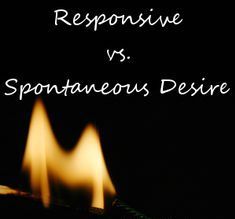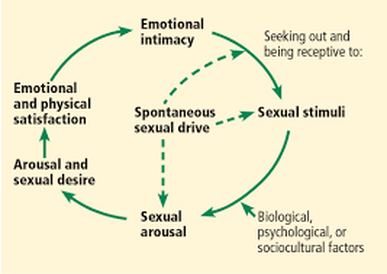
But what about a few years down the track, or for some people even a few months, we are busy with work, kids, family, hobbies, sports, stressed, tired, lack time or motivation. We still love this person, we still find them attractive but gee...when was the last time we got sexual together?
Once the initial lust and limerance fades which can be 3 -12 months or the honeymoon stage ends, which is usually around the 24-36 month mark, there is a natural decline in desire. This is when most people go back to their usual desire levels, this can be going from every day, to once every few weeks or months for some people. And it can be very distressing for the person who has a lower desire level and for their partner. Now if both people are OK with the change and they have a similar desire level then there is no problem, but when one or the other has a different need for sexual activity and all it brings (so much more than just a physical release), then there can be concern. The partner who has the higher desire level can feel unattractive to their partner, and the one with the lower level may feel guilty or pursued, leading both to be unhappy about the situation.
The fact is only about 25% or people who identify as female and 50% or those who identify as male actually continue to have spontaneous desire. The overwhelming majority have responsive desire (75% female identified and 50% male identified). As can be seen from the diagram there are a range of things that people may respond to: emotional intimacy, sexual stimuli and sexual arousal, these lead on to arousal and sexual desire and then emotional and physical satisfaction which finally brings people back to emotional intimacy.

For those who have responsive desire they need something to respond to, a stimuli.....an emotional connection, something sexual like an image or an arousing thought or actual physical stimulation. As human beings we all have a sexual flame....some people require more fuel to ignite it than others and some find it dampens quickly.
If we think back to the early days with our partner, we are in a state of NRE (New Relationship Energy), we are excited to see them, we run on less sleep, everything is shiny and new. We are experiencing lust and limerance (an emotion often mistaken for love, keeps us coming back for emotional connection and intimacy until it morphs into deep love). Our desire is spontaneous.....or is it? Yes we desire them when we are together and when we are apart, but we know when we will see each other, our time together is planned and in the time between we build the anticipation of the meetings....so much more planned than we remember.
One of the ways to get back the passion and reignite the flame of desire is to remember what were the things that worked in the past, take the pressure off, relax and have fun. Work out what were the things that ignited desire and do more of those, and avoid the things that dampen the flame.
Be emotionally connected, you rarely want to engage sexually with someone you feel distanced from or are angry with.......Remember the person who you were first attracted to, how sexy you found them, what fired them up with passion and joy, how attracted to them were you when they were engaging in that, step back and look at your partner with fresh eyes....... For some it may be a sexual stimuli such as a sexy movie, erotic story or talking fondly and playfully about sexier times...... And sometimes getting into things, being physical, kissing, touching, massage, getting aroused, these stimuli can spark the flame, for some desire comes after physical arousal.
So as our relationships grow, our desire may wane, this is natural, but it can return, it is not the end of the relationship or your sex life.

 RSS Feed
RSS Feed
